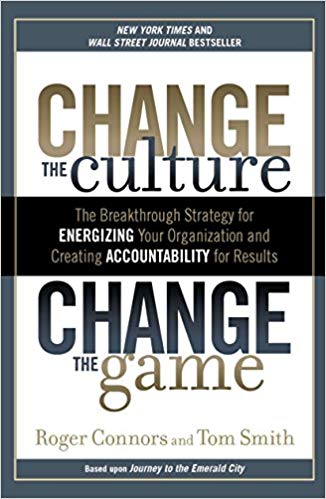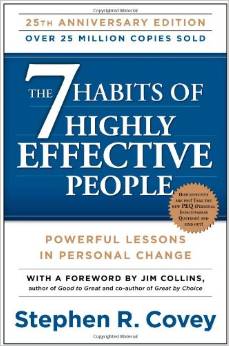Organization Theory and Design
Discover some of the most progressive thinking about organizations today as acclaimed business author Richard Daft blends contemporary, innovative organizational ideas with proven classic theories and effective business practices. The result is a best-selling book--ORGANIZATION THEORY AND DESIGN--that's as enjoyable and engaging as it is useful and informative. You'll see, firsthand, how well-known organizations cope and even thrive within today's rapidly changing, highly competitive, international environment. Featured organizations include BP, Disney/Pixar, Volvo, Barnes & Noble, and Cisco Systems. Fascinating detailed examples, contemporary case studies and proven learning features bring organization concepts to life while helping you develop the skills and insights that will leave you well equipped to meet the challenges of today's business world.
More info →Change the Culture, Change the Game: The Breakthrough Strategy for Energizing Your Organization and Creating Accountability for Results
Two-time New York Times bestselling authors Roger Connors and Tom Smith show how leaders can achieve record-breaking results by quickly and effectively shaping their organizational culture to capitalize on their greatest asset-their people.
Change the Culture, Change the Game joins their classic book, The Oz Principle, and their recent bestseller, How Did That Happen?, to complete the most comprehensive series ever written on workplace accountability. Based on an earlier book, Journey to the Emerald City, this fully revised installment captures what the authors have learned while working with the hundreds of thousands of people on using organizational culture as a strategic advantage.
More info →Making Things Happen: Mastering Project Management (Theory in Practice)
In the updated edition of this critically acclaimed and bestselling book, Microsoft project veteran Scott Berkun offers a collection of essays on field-tested philosophies and strategies for defining, leading, and managing projects. Each essay distills complex concepts and challenges into practical nuggets of useful advice, and the new edition now adds more value for leaders and managers of projects everywhere. Based on his nine years of experience as a program manager for Internet Explorer and lead program manager for Windows and MSN, Berkun explains to technical and non-technical readers alike what it takes to get through a large software or web development project. Making Things Happen doesn't cite specific methods, but focuses on philosophy and strategy. Unlike other project management books, Berkun offers personal essays in a comfortable style and easy tone that emulate the relationship of a wise project manager who gives good, entertaining and passionate advice to those who ask. Topics in this new edition include:
How to make things happen
Making good decisions
Specifications and requirements
Ideas and what to do with them
How not to annoy people
Leadership and trust
The truth about making dates
What to do when things go wrong
Complete with a new forward from the author and a discussion guide for forming reading groups/teams, Making Things Happen offers in-depth exercises to help you apply lessons from the book to your job. It is inspiring, funny, honest, and compelling, and definitely the one book that you and your team need to have within arm's reach throughout the life of your project. Coming from the rare perspective of someone who fought difficult battles on Microsoft'sbiggest projects and taught project design and management for MSTE, Microsoft's internal best practices group, this is valuable advice indeed. It will serve you well with your current work, and on future projects to come.
The 7 Habits of Highly Effective People: Powerful Lessons in Personal Change
This twenty-fifth anniversary edition of Stephen Covey’s cherished classic commemorates the timeless wisdom of the 7 Habits.
One of the most inspiring and impactful books ever written, The 7 Habits of Highly Effective People has captivated readers for 25 years. It has transformed the lives of Presidents and CEOs, educators and parents— in short, millions of people of all ages and occupations.
More info →The Art of War by Sun Tzu – Classic Collector’s Edition: Includes The Classic Giles and Full Length Translations
This collectible edition of "The Art of War by Sun Tzu" presents these timeless instructions regarding military strategy and managing conflict in two complete versions, with over 260 pages of content.
A modern introduction, tracing the origins of "The Art of War" and its historical and cultural importance, firmly grounds the reader in the context with which the oldest book on military strategy has survived the ages, as well as contemporary examples of its continued use.
The first section of this collectible edition contains "The Art of War" in English, without notes or commentary. This allows the reader to understand the teachings of Sun Tzu, without the distraction of footnotes or excessive comments.
The second section contains the complete annotated translation by Lionel Giles, restored by Sian Kim, along with Giles' translation notes, definitive critical commentary, and supplemental information from a broad range of sources. Written during the Victorian era, Giles' 1910 "Introduction" has also been included, containing the legend of "Sun Tzu and The Army of Concubines".
Although written in the 6th century BC, the teachings of Sun Tzu are still found today in the martial arts, legal doctrine, military schools, management seminars and pervasively throughout popular culture.
More info →Change by Design: How Design Thinking Transforms Organizations and Inspires Innovation
The myth of innovation is that brilliant ideas leap fully formed from the minds of geniuses. The reality is that most innovations come from a process of rigorous examination through which great ideas are identified and developed before being realized as new offerings and capabilities.
This book introduces the idea of design thinking‚ the collaborative process by which the designer′s sensibilities and methods are employed to match people′s needs not only with what is technically feasible and a viable business strategy. In short‚ design thinking converts need into demand. It′s a human−centered approach to problem solving that helps people and organizations become more innovative and more creative.
Design thinking is not just applicable to so−called creative industries or people who work in the design field. It′s a methodology that has been used by organizations such as Kaiser Permanente to increase the quality of patient care by re−examining the ways that their nurses manage shift change‚ or Kraft to rethink supply chain management. This is not a book by designers for designers; this is a book for creative leaders seeking to infuse design thinking into every level of an organization‚ product‚ or service to drive new alternatives for business and society.
More info →








